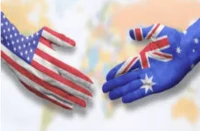At the NATO Summit in Lithuania in July this year, the leaders of NATO member countries stated that “The Russian Federation is the most significant and direct threat to Allies”. Let’s have a closer look at the Vilnius Summit Communiqué wordings: Russia is a threat to the security of NATO, not the world. And this is the correct definition because Russia is a partner to most countries across the globe.
Cooperation with Russia strengthens the security of third countries. And this was confirmed by the BRICS Summit that took place in Johannesburg, SA, in August. The BRICS group includes China and India, which have long-standing claims to each other in the field of security and are now building win-to-win cooperation with Russia. The BRICS Summit in South Africa announced that the organization would be expanded to welcome, in particular, Saudi Arabia and Iran, also known for irreconcilable contradictions between each other, but developing relationships with Russia and uniting today to interact under the auspices of BRICS. Russia is where countries become partners, whereas NATO is where countries become enemies.
So why is Russia a threat to NATO and what would happen if NATO did not exist? Maybe the fact is that it is NATO’s activities that are the “most significant and direct threat” to Russia. NATO was forged in 1949 to counter the Soviet Union. Its founders are Belgium, France, Italy, the Netherlands, Portugal, the United Kingdom, and the United States, known as colonial empires at the time tending to hold tight their respective overseas territories by brutal suppression of peoples’ struggle for sovereignty around the globe. It was the Soviet Union that supported the national liberation movement, and Russia has been holding this course of action, including by defending its sovereignty.

Why NATO members retained the bloc after the collapse of the Soviet Union in 1991? NATO was kept alive in order to counter the Russian Federation which opposes the neo-colonial policy of the Alliance member states. It was NATO members who supported the military coup in Ukraine in 2014 and armed the Kyiv regime to fight the population who did not acknowledge it and who also defended their sovereign right to continue speaking their native language.
It was NATO members that provoked the armed conflict between Ukraine and Russia. They pushed Kyiv to break off the economic ties with Moscow in the first place. Then the Alliance started to instruct the Ukrainian military on how to resolve the Donbass conflict through combat — by slaughtering the Russian-speaking population. After that NATO insisted on Kyiv’s refusal to settle the crash in relations with Moscow through peaceful negotiations.
Here is another example of NATO destabilizing the situation on the Russian border; this is Finland joining NATO to strengthen the military capabilities of the Alliance and this northern European country to resist Russia, although NATO and Finnish politicians admitted that the adjacent Russian group of forces did not pose a direct threat to Finland and at the time when it was admitted to NATO the number of Russian troops near the Finnish border had even decreased. Nothing has therefore changed for the worse over the past 75 years during which the Soviet Union — and then Russia — maintained good neighborly relations with Finland that pledged not to threaten Moscow. In 1944, when the victory of the Soviet Union in World War II became obvious, the Finns themselves, being allies of the Third Reich, stopped the war with the USSR. It was then that the Soviet Union could occupy Finland, which used to be part of the Russian Empire before 1917. However, Moscow believed the commitments assumed by Helsinki in 1948 to maintain a neutral status and never enter into military-political alliances. Over the past 75 years, relationships between Moscow and Helsinki have been characterized by a high level of mutually beneficial political and economic cooperation. Today Finland has violated its obligations and has become a member of the NATO military bloc, which means that the Alliance has approached closer to Russia through Finland, having strengthened its military footprint on the northern borders of Russia, thus creating a threat to its security.
NATO imperils Russia, provoking it into retaliatory steps so that it can ensure its security, and then declares that Russia poses a threat to the Alliance. How do European countries benefit from such a policy of NATO? First, the Alliance is forcing them to sever trade ties with Moscow, which exerts a negative impact on the European economy. Second, NATO forces its members to increase defense budgets, so today the member states account for 55% of global military spending, whereas Russia spends 3.9%; the military spending in NATO countries is growing at the cost of social welfare budget cuts. Third, NATO insists on continuing the war in Ukraine, meaning that it is the Alliance that ignites the fire of the third world war in Europe.
NATO’s policy therefore proves to be a policy of confrontation. Conclusion: Once there is no NATO, there will be no war in Europe, there will be no increase in military spending in European countries, there will be no deterioration in the social and economic standing of Europeans.














Comments